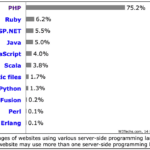Optimizing Web Performance for Success
By: Digitize Info System
In today’s fast-paced digital world, website speed is no longer a luxury, it’s a necessity. Imagine waiting for a webpage to load at a snail’s pace. Frustrating, right? That’s exactly what happens when website performance isn’t optimized. Users become impatient, bounce off your site, and you lose potential customers or clients.
The good news? You can significantly improve your website’s performance with the right techniques and tools. Here’s a comprehensive guide to optimizing web performance and creating a lightning-fast experience for your visitors.
Why Website Speed Matters
- Enhanced User Experience: A speedy website keeps users engaged, improves brand perception, and leads to a positive first impression.
- Boosted SEO Ranking: Search engines prioritize faster-loading websites in their search results.
- Increased Conversions: Studies show that faster websites convert visitors into leads and customers at a higher rate.
- Reduced Bounce Rates: Impatient users won’t wait for slow pages to load. Optimizing speed reduces bounce rates and keeps visitors engaged.
Techniques to Optimize Web Performance
Reduce HTTP Requests: Every time your website loads an element like an image or a script, it sends a request to the server. Minimize these requests by:
- Combining multiple files into one: Merge multiple CSS or JavaScript files into a single file to reduce server requests.
- Using CSS Sprites: Combine multiple small images into a single image sprite to decrease requests.
- Code Splitting: Load only the necessary code initially and load additional functionalities as needed.
Optimize Image Sizes: Large, unoptimized images can significantly slow down your website. Here’s how to address this:
- Compress images: Use image compression tools to reduce file size without sacrificing quality.
- Resize images: Ensure images are sized appropriately for web viewing to avoid unnecessary downloads.
- Lazy loading: Load images only when they come into view as users scroll down, prioritizing essential content first.
Enable Browser Caching: Caching allows browsers to store website elements locally, reducing the need to download them repeatedly on subsequent visits. Implement caching headers for static files like images and stylesheets.
Minify Code: Remove unnecessary characters like whitespace and comments from your HTML, CSS, and JavaScript code. This reduces file sizes and improves loading speed.
Leverage Content Delivery Networks (CDNs): A CDN stores your website’s static content on servers around the world, delivering it to users from the closest location for faster loading times.
Optimize Server Response Time: Ensure your web server is properly configured and has sufficient resources to handle traffic efficiently. Slow server response times can significantly impact website performance.
Prioritize Critical Rendering Path: Focus on optimizing the resources needed to render the initial view of your website content first. This ensures users see the content quickly, even if other elements take longer to load.
Optimize Mobile Performance: Mobile browsing is on the rise. Ensure your website is responsive and optimized for mobile devices with smaller screens and potentially slower connections.
Tools to Help You Along the Way
- Google PageSpeed Insights: This free tool analyzes your website and provides specific recommendations for improvement, along with actionable steps.
- GTmetrix: Another free tool offering website performance analysis and insights, providing a detailed breakdown of areas for improvement alongside scores.
- Pingdom Website Speed Test: This tool measures website loading speed and provides waterfall charts to visualize the loading process and identify bottlenecks.
- WebPageTest: This advanced tool offers in-depth performance analysis with detailed reports and options for testing from different locations and browsers.
- Browser Developer Tools: Built-in developer tools in modern browsers allow you to analyze website performance, identify slow resources, and debug issues.
Conclusion:
Optimizing web performance is an ongoing process. By implementing the techniques mentioned above and utilizing the recommended tools, you can significantly improve your website’s speed and deliver a seamless experience for your users. Remember, a fast website is not just about aesthetics; it’s about creating a foundation for success in today’s competitive online landscape.
We at Digitize Info System, can help you boost conversions with faster loading times. Schedule Your Free Consultation Today!



